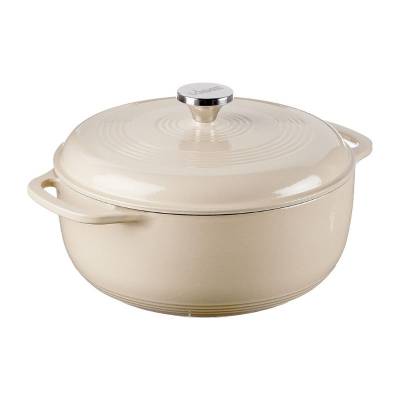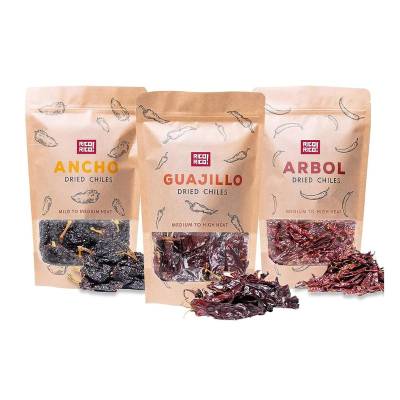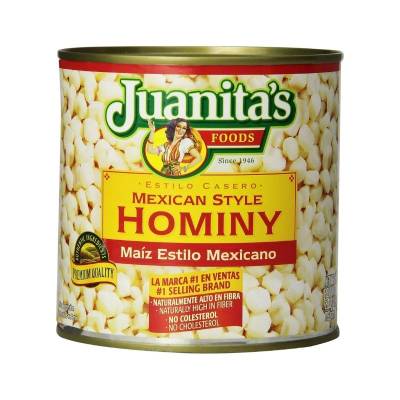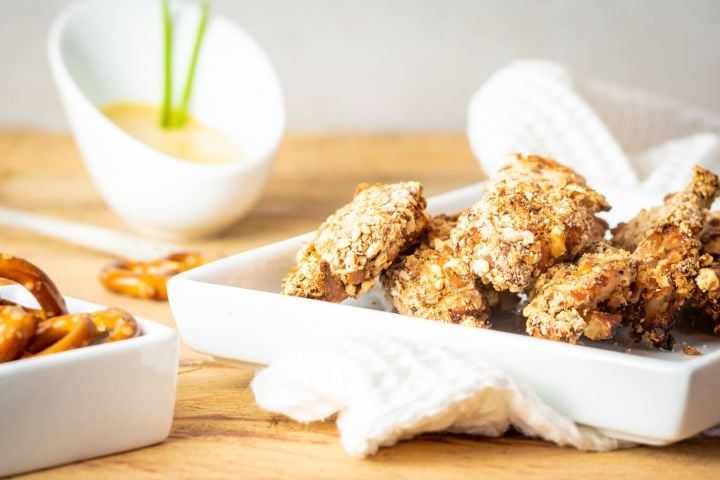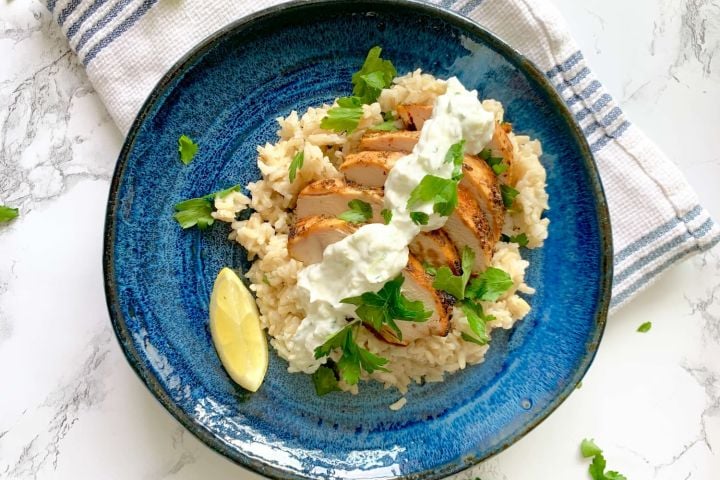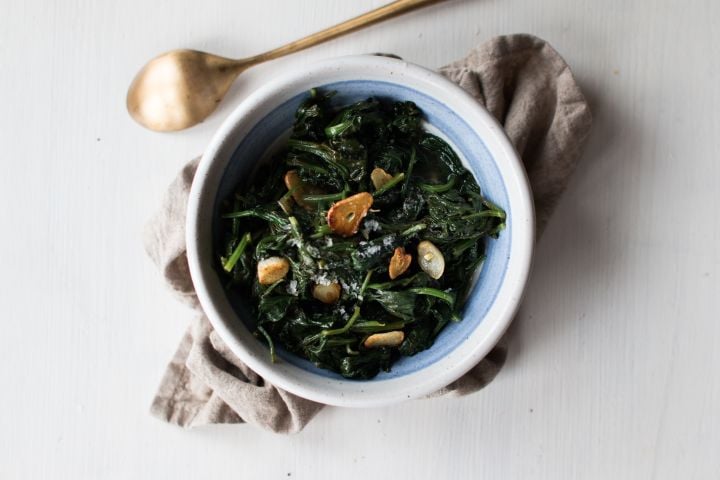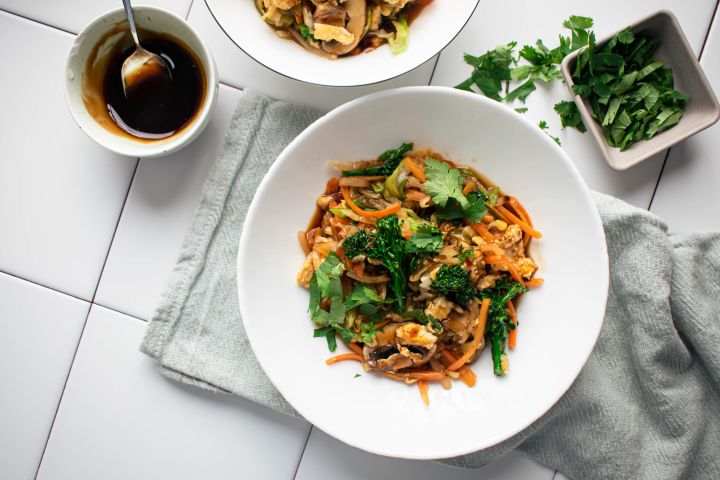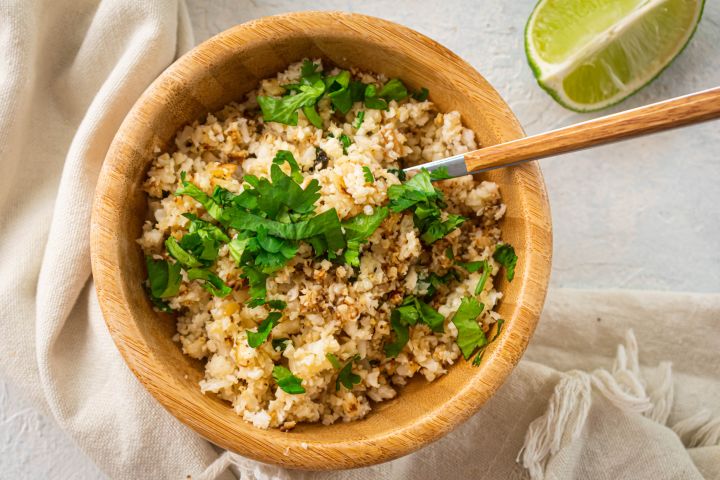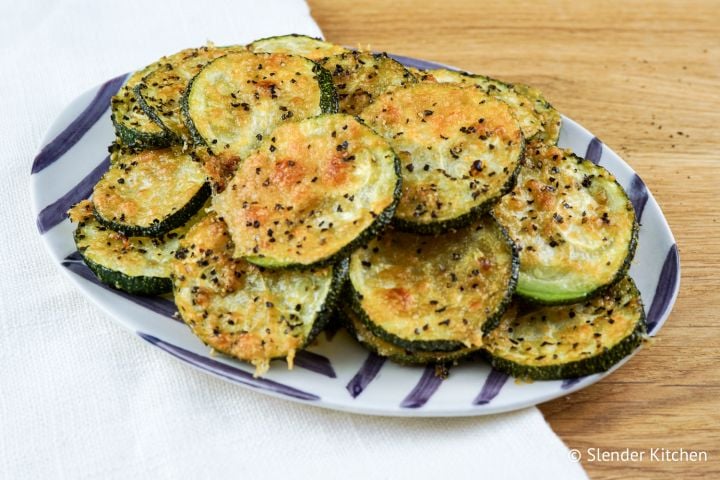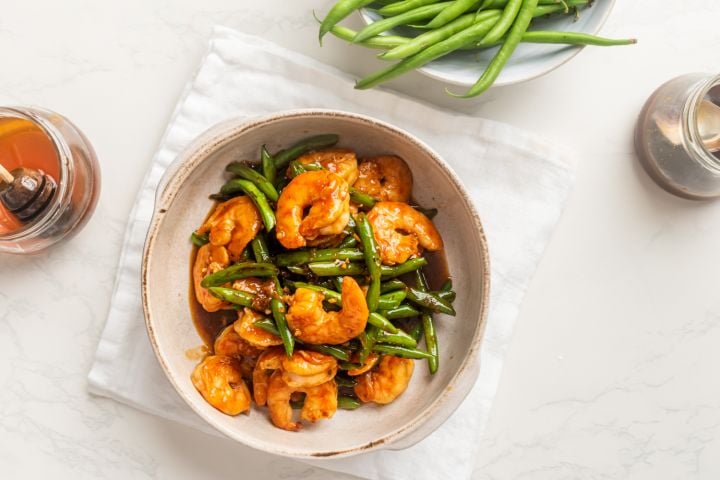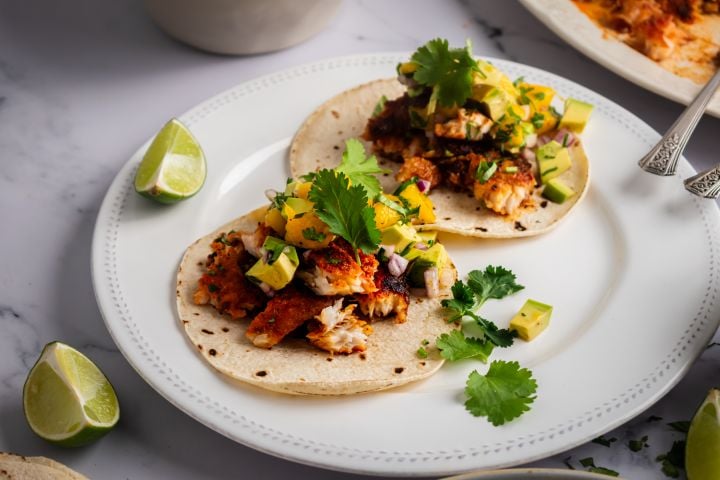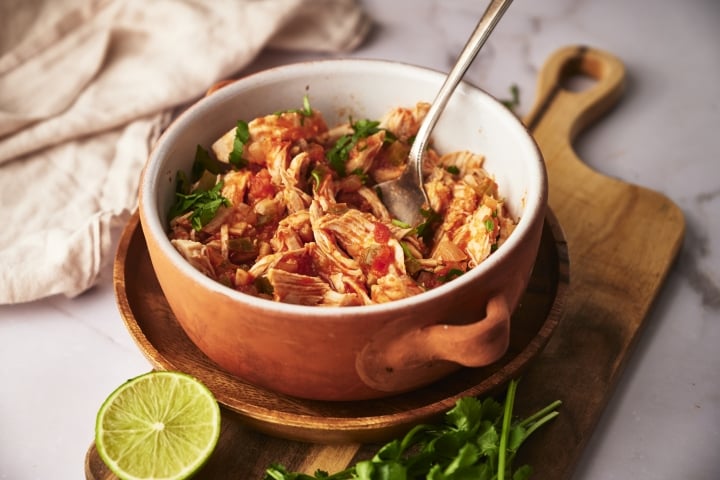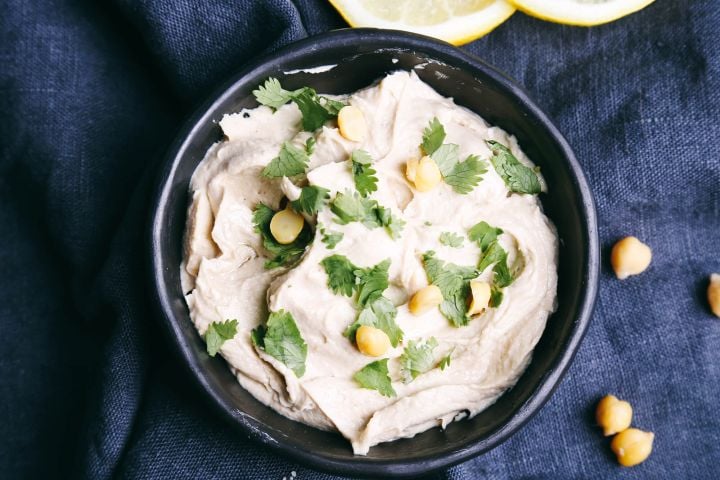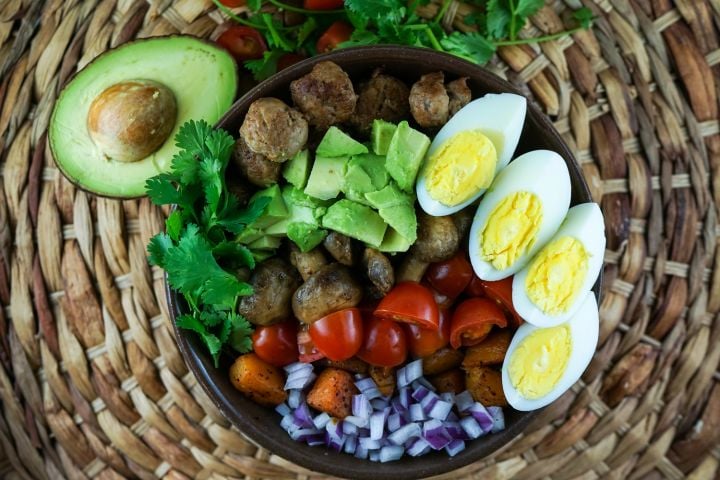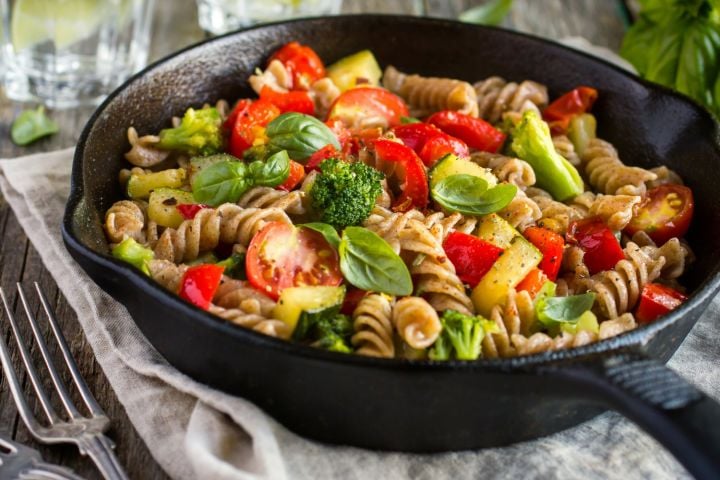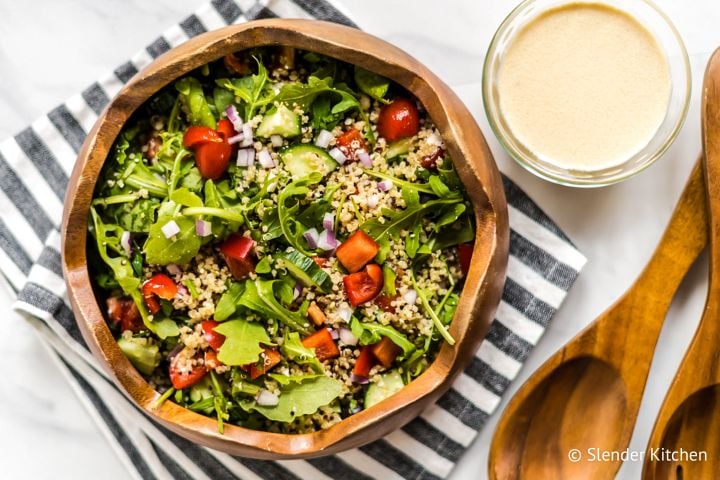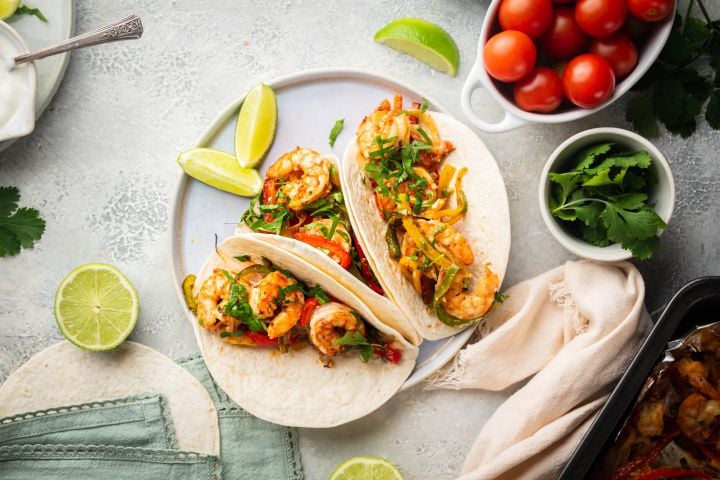Vegetarian Pozole
Rich and spicy Vegetarian Pozoel with hominy, pinto beans, and the most delicious dried chile broth. This classic Mexican soup gets a meatless makeover!
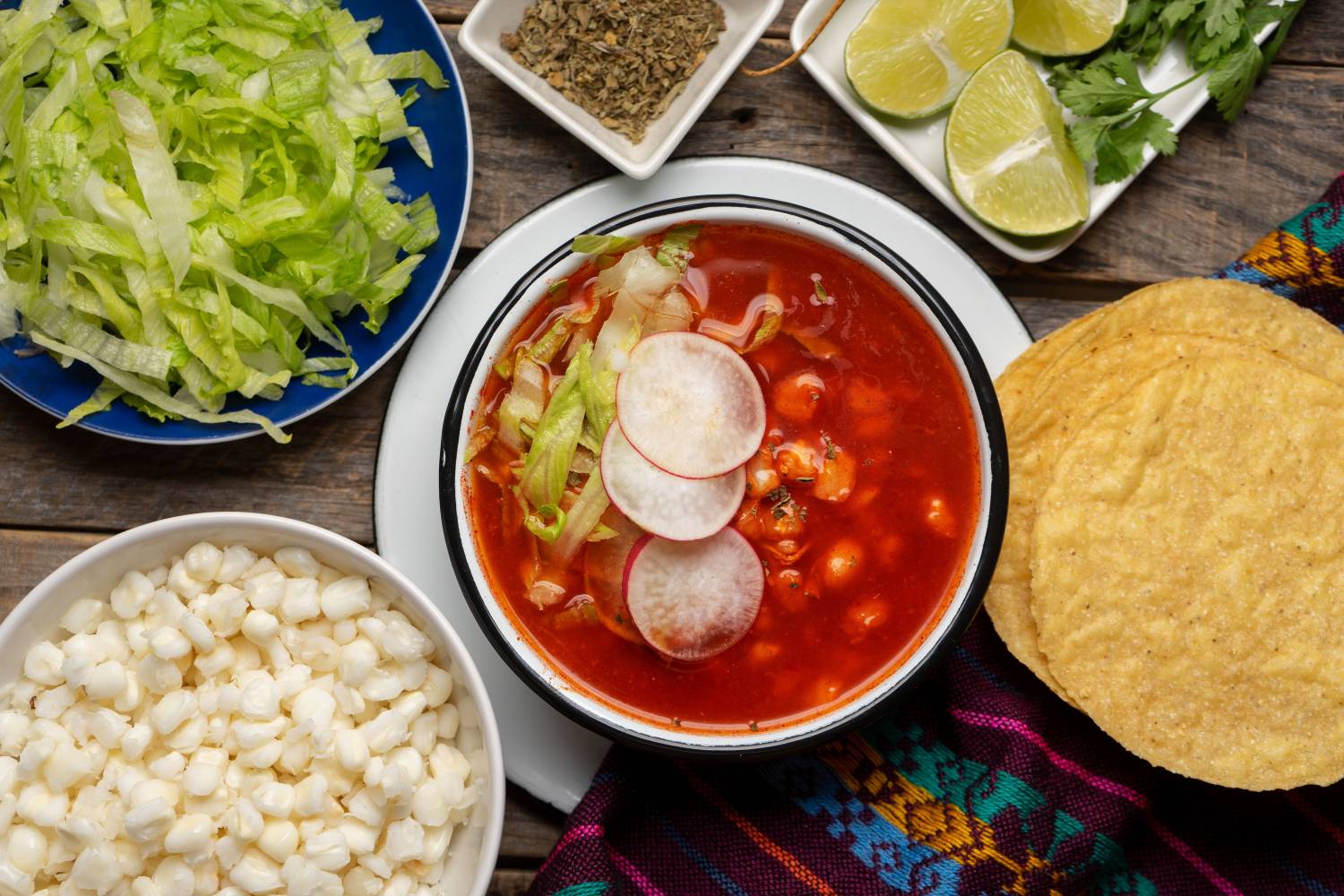
When it comes to Mexican soups, pozole is one of the absolute best! However, it is almost always made with chicken or pork so today we wanted to share a delicious vegetarian and vegan pozole that is packed with just as much flavor as the typical Red Pozole and Green Pozole found throughout Mexico.
This Red Vegetarian Pozole is definitely a labor or love, but it is 100% worth it! With the most delicious spicy and smoky broth made from a combination of three different dried chile peppers (guajillo, ancho, and arbol chiles) this soup is beyond tasty.
Add in meaty hominy, pinto beans, and all your favorite toppings and this is a meal you will make again and again.
What is pozole?
Pozole, sometimes spelled posole, is a classic Mexican soup that is normally made with pork or chicken. It comes in two varieties, pozole rojo (red pozole) and pozole verde (green pozole).
Red pozole is made with dried red chilies and green pozole is made with tomatillos, cilantro, and jalapenos, similar to salsa verde.
All pozole is made with hominy and served with a variety of toppings including shredded cabbage, radishes, diced onions, avocado, lime juice, and more.
While pozole isn't traditionally made without meat, this vegetarian and vegan pozole is an option for anyone looking for a plant-based option.
Ingredients for Vegetarian Pozole
Here is everything you need to make this vegetarian red pozole.
- Dried chile peppers: Red pozole is made with a variety of dried chile peppers, which give it a deep red color and spice. This pozole uses a combination of dried ancho chile peppers, dried guajillo chile peppers, and dried chile de arbol peppers. For a spicier soup, add some extra chile de arbol peppers or throw in a few chipotle peppers in adobo.
- Hominy: Hominy is a type of corn that is commonly used in Mexican soups and stews. It is larger and chewier than traditional corn and much lighter in color. Normally hominy is sold canned in the Mexican or international aisle of the store. Always rinse hominy before using since the liquid can be very starchy.
- Pinto beans: To add some variety to this soup, I like to also add some pinto beans. You could also use black beans, white beans, corn, or simply use more hominy.
- Garlic and onions: Most Mexican stews and salsas uses white onion and garlic to build flavor. Pozole is no different and these aromatics ensure a rich, flavorful broth.
- Vegetable broth: Choose vegetable broth that has a nice deep flavor. For a more traditional flavor, look for vegetarian "chicken" broth.
- Herbs and spices: Pozole should have some herbaceous notes, which it gets from Mexican oregano and cilantro. If you can't find Mexican oregano, regular oregano is fine.
- Toppings: Pozole is always served with lots of toppings. The most traditional are radishes, cilantro, shredded cabbage, avocado, fresh lime wedges, and diced onion. It is also normally served with tostada shells or corn tortillas on the side.
How to Make Meatless Pozole
Pozole is a little bit of a labor of love. Although it takes some time to make, it isn't a difficult process.
1. Toast the chilies and aromatics
When you toast the dried chiles, it releases the oils and ensures the stew has tons of chile flavor. Do not skip this step!
Start by opening up the dried chiles. The easiest way to open them up is with kitchen shears versus a knife. You can remove the seeds, or you can leave some of the seeds in for more spice.
Heat the soup pot over medium-high heat. Toast the chiles in a single layer until they’re fragrant and puffing up. Watch them closely as burnt chiles taste very bitter!
Once the dried chiles are toasted, remove them and brown the onions and garlic. Finally cook the cilantro, bay leaves, and oregano for a minute to deepen their flavor.
2. Rehydrate the dried chilies
Add the toasted chile peppers back to the soup pot and pour in half of the vegetable broth. Bring to a simmer and cover. Simmer the soup for 30 minutes or longer to rehydrate the dried chiles and deepen the flavor of the broth.
3. Blend the broth
The easiest way to blend the broth is using an immersion blender right in the soup pot. If not, carefully blend the soup in a blender in batches. Add the blended salsa back to the pot and add the remaining broth. Taste and season with salt as needed.
4. Add the hominy
The last step is adding the hominy and pinto beans to the pozole broth. Make sure to rinse and drain the hominy before adding. Simmer the soup for at least 15 minutes. Then serve with all your favorite toppings.
Pozole Toppings
Traditionally, both red and green pozole is always served with toppings on the side. In my opinion, this is even more important with vegetarian pozole since it adds different textures and flavors. Here are some favorites:
- Shredded cabbage or lettuce
- Radishes
- Avocado
- Diced onions
- Dried oregano
- Queso cotija or queso fresco
- Cilantro
- Fresh lime juice
- Tortilla chips or tostada shells
Recipe Ideas and Variations
There are many ways to customize this homemade pozole and make it your own.
- Add more vegetables: Although pozole doesn't traditionally have a lot of vegetables, you could definitely add some. This vegan pozole would be delicious with butternut squash, zucchini, cauliflower, hearty greens, or small pieces of corn on the cob.
- Try different beans: Authentic pozole is only made with hominy but feel free to make this with pinto beans, kidney beans, black beans, chickpeas, or corn. I have even seen versions of vegetarian pozole made with lentils.
- Make it spicier: Pozole isn't traditionally super spicy, it has more of a rich and smoky flavor. However, feel free to spice it up by adding more dried chilies. Another option is to serve it with sliced jalapeno or serrano peppers.
Storing and Freezing Leftovers
Pozole, like almost all soups and stews, tastes even better after a night in the fridge. This soup keeps well in the fridge for 4-5 days. It freezes well and can be stored in the freezer for up to 6 months.
Always let the soup cool completely before storing it in the fridge or freezer.
Frequently Asked Questions
Here are the most common questions about this pozole recipe.
Is hominy good for you?
Hominy is a grain, similar to corn, that is used in pozole, soups, stews, drinks, and even. The kernels are larger than standard corn and are prevalent in Mexico, Latin America, and South America.
Hominy is naturally gluten-free, low in fat, and contains vitamins like niacin, folate, and B vitamins. It is high in fiber and also a good source of Omega-6 fatty acids.
Overall it has a nutritional profile similar to corn. The only thing to be aware of is that hominy is usually canned and can be high in sodium.
How spicy is pozole?
Most pozole is mildly spicy due to the dried chilies, which mellow out as they cook. If you are nervous about the spice level, leave out the dried chile de arbol peppers that are significantly spicier than the guajillo and ancho chile peppers.

Vegetarian Pozole
- Download
- Send to your inbox
Ingredients
-
1 tbsp vegetable oil
-
4 dried guajillo chile peppers, stemmed and seeded
-
4 dried ancho chile peppers, stemmed and seeded
-
2 dried chile de arbol, stemmed and seeded
-
1 tbsp dried oregano
-
2 bay leaves
-
1 onion, chopped
-
8 garlic cloves (smashed)
-
1 cup cilantro, chopped
-
8 cups vegetable broth
-
45 oz canned hominy
-
15 oz canned pinto beans (or more hominy)
Instructions
(Hide Media)Switch to prevent your screen from going dark.
Heat a Dutch oven or large stockpot over medium-high heat. Add the dried chilies and toast on each side for about 2 minutes. Remove and set aside. Add the oil to the pan. Add the onion and cook for about 5 minutes until beginning to brown. Add the whole garlic cloves and cook for 1-2 minutes until fragrant. Stir in the cilantro, bay leaves, and oregano. Cook for 1 minute.
Equipment
* Percent Daily Values are based on a 2,000 calorie diet. Your daily values may be higher or lower depending on your calorie needs.
The Nutritional Values provided are estimates only and may vary based on the preparation method.
Notes

Get delicious, healthy recipes delivered each week right to your inbox.

Snap a picture and show us what you made on Instagram or Facebook.
Tag us using @SlenderKitchen or #slenderkitchen.





